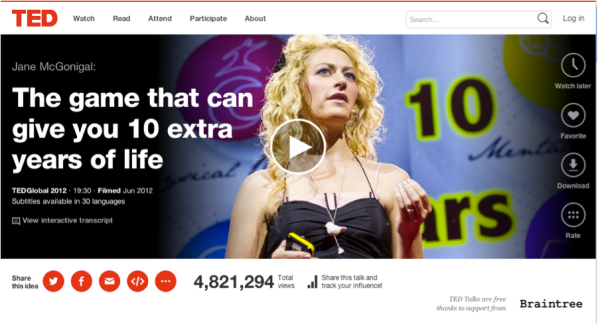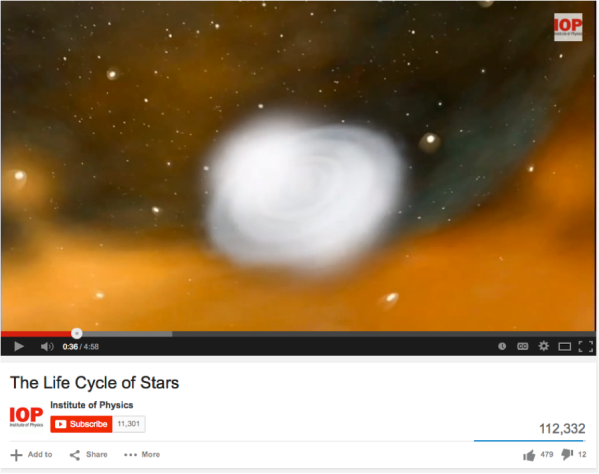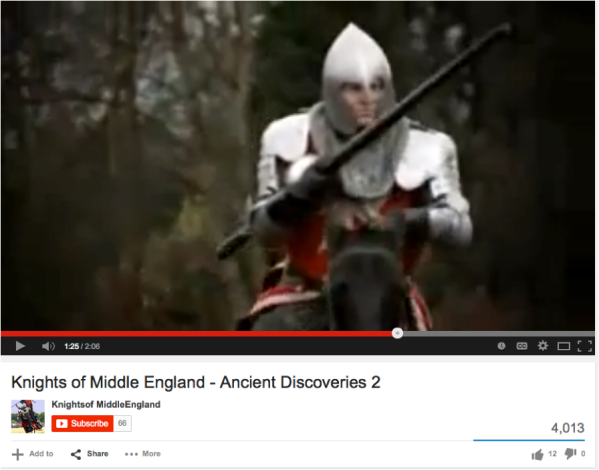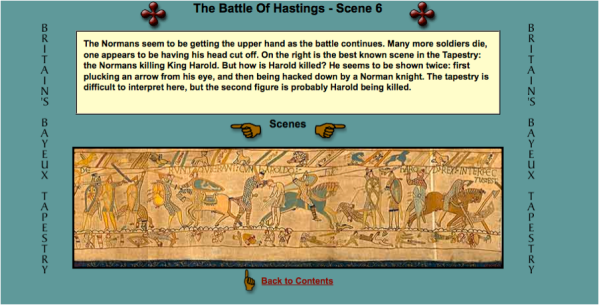Quizlet: Makes Studying History Competitive and Interactive
Quizlet. (2014). Retrieved from http://quizlet.com/subject/medieval-africa-flashcards/
A few weeks ago, a colleague sent the following email to our school’s social studies teachers, principal, and me:
All,
I found this really cool website and wanted to share.
Type in any place or time in history that you’re studying
(at the top under Search Quizlet) for flashcards, games and quizzes.
I took my Period 6, World Geography class, to the computer lab
last Wednesday and they had a blast studying Medieval Africa.
After reviewing the flashcards they took the Scatter Quiz. It’s a fun day in the lab.
Karl
Quizlet is a site that has been shared frequently within our school. Karl was genuinely excited by his find, and happy to share it. Quizlet is a free site where teachers create their own lessons, and borrow those created by others. Different activities include flashcards, games, and quizzes that students use to study on their own, compete for high scores against others, and prepare for assessments.
Karl explained how he best utilized the website by making a competition out of studying the flashcards and completing the Scatter Quiz. Before taking the class to the lab, Karl posted on the board what he said was his personal best time for the quiz. He challenged his students to beat this feat, offering a prize to anyone who could. Every student was engaged for the entire class period. Karl said his TAs wanted to take part in the activity. The students were not only prepared for Friday’s Africa test, but they are excited to study the next World Geography unit, Middle China, so they can return to the computer lab and use Quizlet again.
The academic vocabulary included on the teachers’ flashcards will need to be introduced before students use the site. Vocabulary acquisition occurs as the class reads, researches, and studies the components of the particular unit. Karl’s activity (yes, I’m giving him credit for being so inventive!) with Quizlet is an excellent source for review and mastery before a test in any history class.
TED talk. Jane McGonigal. The game that can give you 10 extra years of life: Introducing Students to the Power of Resilience and Self-Determination
The game that can give you 10 extra years of life. (2012, June). Retrieved from https://www.ted.com/talks/jane_mcgonigal_the_game_that_can_give_you_10_extra_years_of_life?language=en
Boosting resilience improves mood, self-concept, interpersonal relationships, and health. Jane McGonigal, a video game designer, suffered a traumatic brain injury that left her in bed from a concussion, and unable to handle stimulants such as bright light, noise, reading, or coffee. She became seriously depressed and suicidal. Desperate for a way to feel better, McGonigal created a small game for herself with an avatar, Jane the Slayer, to battle the things that were causing her pain. She began to feel emotional improvement almost immediately.
McGonigal has done an extensive review of the literature on studies that focus on the effects of gaming. She cites research by BYU, University of Michigan, East Carolina University, and Stanford that all show significant positive benefits from playing video games. From improving social interactions and parent-child bonds to “treating” depression and mood disorders better than prescription medicines, these studies revealed powerful outcomes from game playing.
Rather than just being a nineteen-minute pitch for video gaming, McGonigal presents a compelling message about health, positive thinking, and self-empowerment. Her talk is accompanied by powerful graphics and opportunities for audience participation. I encourage educators from middle school and up to consider sharing this TED talk with their students.
Students will likely have prior knowledge about concussions, and most likely have familiarity with video gaming. New academic vocabulary will include: resilience, traumatic brain injury, suicidal ideation, stimulants, and depression. Aside from the obvious curricular connections to Health, Physical Education, AVID, Psychology, and Sociology, Language Arts students could apply McGonigal’s methods as an assignment to create their own avatar and “foes” they wish to vanquish, and write about them. Students could be given the task of doing Internet research and finding and citing recent studies on the effects of gaming.
TED talks are free use media, thanks to support from Braintree. My assignment to educators, parents, and all other humans: watch this talk and participate as if you were in the audience at Edinburg. The experience will affect you. The information you gain could be transformative physically, mentally, emotionally, and socially. If it can do that for you, imagine what it can do for your students and children.
Related work by the Jane McGonigal:
Gaming Can Make a Better World
Jane McGonical’s blog: http://janemcgonigal.com/
Jane interviewed by Stephen Colbert: http://thecolbertreport.cc.com/videos/i5rwqs/jane-mcgonigal
Book: McGonical, Jane. (2011). Reality is Broken: Why Games Make Us Better and How They Can Change the World. New York: Penguin Press.
Mouse Party: Science and Health Lesson, This is Your Mouse’s Brain on Drugs
Genetic Science Learning Center (2014, June 22) Mouse Party. Learn.Genetics. Retrieved from http://learn.genetics.utah.edu/content/addiction/mouse/
Mouse Party from the Genetics Science Learning Center at the University of Utah is an excellent interactive site designed to teach the effects of drugs on the user’s brain. Students are given the role of scientist to observe what happens to the brain when mice are under the influence of various drugs. A glass tank of mice is in the “lab,” each mouse high on a different drug. The student selects a mouse and drags it to the observation chair. The mouse is then placed in a machine that explains which transmitters and receptors in the brain are affected, how they are affected, and how these effects influence the body. The seven mice in the tank explain the effects of LSD, alcohol, marijuana, ecstasy, heroin, methamphetamine, and cocaine.
Picking up the mouse, placing it in the chair and then bringing it to the machine is interesting and involving for students. After observing the mouse in the machine, every middle school student enjoys ejecting the mouse, and watching it being dropped back into the tank. Narration that is supported by colorful animated graphics and text boxes provides the advanced science terminology in an entertaining way. Sufficient frontloading of information and vocabulary is necessary for students to understand everything that is presented. Students can complete a chart as the mice are placed in the machine, noting the areas of the brain and how the drug affects them, and how the drug impinges on body functions. They can also draw illustrations of the brain’s anatomy.
This is an excellent site for learners of all modalities, including language learners. Opportunities are provided to read, listen, manipulate, and observe the information. And you gotta love the cute little wasted mice! I have observed 7th grade Life Science students interact with this webquest for entire class periods. They are disappointed when the class comes to an end. I would recommend this site for high school freshmen studying Health Science.
Related site: Meth Mouse
Dangerous Decibels: Science and Health Lesson, Learning About and Protecting Your Ears From Dangerous Sounds
Dangerous Decibels – A public health partnership for prevention of noise-induced hearing loss and tinnitus. (2014). Retrieved from http://www.dangerousdecibels.org
Dangerous Decibels is a public health organization committed to the prevention of noise-induced hearing loss through education, exhibits, and research. K – 8 teachers can access educational materials for their schools and communities, study the ongoing research on hearing loss, and schedule classroom presentations. Students will learn the three most important ways to prevent noise-induced hearing loss: “Turn it Down!” “Walk Away,” and “Protect Ears.”
As a web-based lesson, the site is an important tool that presents to middle school students the prevalence of noise-induced hearing loss and tinnitus. It explains what can be done to prevent environmental hearing loss. The simplest classroom strategy for using this free site is to have students complete a worksheet while viewing the site. Students should begin on the home page to answer comprehension questions from the “Did you know?” column. From the home page, this is the most important item students should respond to: “What three things can you do to prevent noise-induced hearing loss and tinnitus?”
From here, students can continue with the Virtual Exhibit and play games, complete activities, and view demonstrations to find the sources, effects, and protection from dangerous sounds. I have observed 7th grade students remain deeply engrossed in the virtual exhibit for entire class periods, and return to the library at lunchtime to complete the items they did not have time for in class. Teachers also enjoy experiencing the entertaining interactive educational material provided by Dangerous Decibels.
Knowledge gains will include academic vocabulary including tinnitus, decibel, and the anatomy and physiology of the ear: pinna, auditory canal, tympanic membrane, ossicles, malleus (hammer), incus (anvil), stapes (stirrup), auditory nerve, and cochlea.
The Life Cycle of Stars: You Are Recycled Star!
The Life Cycle of Stars. (2012, November 1). Retrieved from https://www.youtube.com/watch?v=PM9CQDlQI0A
For a five-minute investment of classroom time, Earth Science educators will get a ‘Big Bang’ for their teaching buck if they share The Life Cycle of Stars video produced by the Institute of Physics. The Earth Science standard of understanding that the life cycle of a star varies as a function of the mass of a star and the stage of its lifetime is gorgeously illustrated and animated in this YouTube video. It colorfully presents examples of the life stages of average-sized stars and super-sized stars, the supernovas. It explains why small and average stars contain only lighter elements such as Hydrogen and Helium, while large stars contain those gases and a range of heavier metals through Magnesium, Silicon, and Iron.
Because this short lecture tightly focuses on star life cycles, students will need prior knowledge about gravity, density, mass, matter, energy, elements, metals, gases, and the Big Bang to get the most benefit. A galaxy of astronomy terms are introduced in The Life Cycle of Stars: nuclear fusion, reactions, nebula, Red Giant, White Dwarf, Black Dwarf, Super Nova, and Black Hole. Images of these events and phenomena are illustrated as they are discussed. Adding to the appeal is the Scottish narrator, Dr Tim O’Brien, who calls to mind Scotty from the original Star Trek series.
My wife, a former middle school science teacher, thinks it would be useful to show this video on two separate occasions. The first showing would serve as a high-interest introduction to the standard. Following readings and discussion, the video could be watched a second time, when students can more fully absorb and digest the content. Since it’s running time is five minutes, watching it a second time for deeper comprehension is a minimal use of classroom time.
The video does a nice job of hooking student interest by explaining that all of the elements in the universe are created in stars. Everything around and in us came from exploded stars. Essentially, our essence is star matter. The next time a student asks, “Why should I learn about the life cycle of a star? You can answer, “Because recycled star is what you are.”
Reuse is allowed under Creative Commons Attribution License.
Knights of Middle England, Ancient Discoveries, The Stirrup: Brace Yourself for Exponential Force
Knights of Middle England – Ancient Discoveries 2. (2010, April 1). Retrieved from https://www.youtube.com/watch?v=LzG3VU6PXVI
Researchers demonstrate the physics of the importance of the stirrup as a stabilizer for the rider and how it combines the mass of horse and rider into a deadly force. Using modern technology to measure pounds of force, an expert horseman completes jousting trials, first with a light spear, then with a massive lance. Wearing the armor of a Medieval Knight, and having his feet planted in stirrups, the rider charges and strikes a shield. The light spear, held at shoulder height, produces an impact of thirty-one pounds of force. Bearing a heavy lance tucked under the arm, the same horseman produces a strike with an impact of 5957 pounds of force. This amount of force is put in context for the viewer as the equivalent of an automobile collision at 70 mph.
The narrator explains that before the use of the stirrup, a rider could only use his light spear in battle. Without stirrups, the force of the impact with a lance would unseat the rider — not a good outcome on the battlefield. Because the stirrup firmly anchors the rider on his horse, horse and rider are connected into a “mobile, armed unit of destruction.” The filmmakers explain how this simple change in technology – the stirrup – changed battlefield tactics for centuries to come.
Beautifully filmed scenes of the trial runs are very entertaining to watch, as horse and rider charge a mounted shield at full gallop. It is the most effortless physics lesson you’ll ever receive. Students will benefit from seeing the gear and weaponry of a Medieval Knight and the demonstration of the stirrup’s contribution to warfare. In addition to the history lesson, this video is an excellent presentation of the Scientific Method. Shown here are: hypothesis about stirrup usage, experiments, measure results, and conclusions. No prior knowledge is required for viewers to comprehend this video. Students K – 12 will be able to follow the action. This video’s two and a half minute running time is a small investment for a big impact, 5957 pounds of force to be precise.
Related video: Knights of Middle England – Filming Ancient Discoveries Series 1: https://www.youtube.com/watch?v=lM6YbJ4XpjE
Battlefield Britain – Hastings: Modern Technology Brings European History to Life
Battlefield Britain – Hastings. (2011, June 15). Retrieved from https/::www.youtube.com:watch%3Fv=u_rAXH09qRY
This hour-long BBC documentary describes one of the most important battles in Europe’s history, The Battle of Hastings 1066 AD. Father and son historians, Peter and Dan Snow, explain modern understanding for the battle, military tactics, and why the Normans were victorious. It begins with a brief history lesson. King Edward of England is dying. Harold, Earl of Wessex, feels he is the rightful successor to Edward, as he is a beloved politician and warrior. Across the channel, William, Duke of Normandy, is a blood relative of Edward and has been promised the throne. King Edward dies in 1066 and Harold has himself crowned. William hears of it and says the coronation is a declaration of war.
The filmmakers make smart use of technology. Satellite images are used to provide aerial views of the geography. The narrators walk the villages and harbors of modern day France and England as they describe the scene one thousand years before. CGI forensic portraits of Harold and William stare out at the viewer, a declaration that these were once flesh and blood men. Modern British police officers in riot gear, demonstrate the strength of a shield wall used by the front lines of both armies to repel infantry and arrows. Actors with historically accurate clothing and weaponry reenact both armies and the actual battle. Both French and English soldiers are interviewed and provide the common man’s experience in 1066. The combination of these techniques brings this middle age event to life.
Viewers will benefit from the quality of this well-researched and beautifully edited documentary. Aside from the World History lesson presented, middle and high school students studying disciplines such as Science, Anthropology, Physics, Geography, Drama, and Video Production, will be enriched by viewing this quality film.
Little frontloading is necessary before viewing this video in the classroom. The presenters do a comprehensive job of explaining and depicting the Battle of Hastings. Standard English is used without a great deal of technical or academic vocabulary. Most students in middle school and above will have knowledge of shields, swords, kings and knights, England and France.
Related documentaries in the Battlefield Britain series: Boudicca’s Revolt, Battle for Wales, Spanish Armada, Battle of Naseby, Battle of the Boyne, Battle of Culloden, and the Battle of Britain.
The Battle of Hastings, 1066 AD. Animated version of the Bayeux Tapestry: An Illustrated Primary Source Document Comes to Life
Newton, David. (2014). Halley’s Comet – Animated Version of Bayeux Tapestry. Retrieved from https://www.awesomestories.com/asset/view/Halley-s-Comet-Animated-Version-of-Bayeux-Tapestry
The Battle of Hastings in 1066 AD was a shocking slaughter of the English by the invading Normans. Events leading up to and during the battle were stitched into a remarkable document called the Bayeux Tapestry. Narrative wall hangings such as the tapestry relayed a story to the mostly illiterate society of the time. Their elaborate illustrations and simple text provided universal access during the Middle Ages. Given that the embroidery depicts a Norman viewpoint of events, it was likely commissioned around 1070 by the House of Normandy. The tapestry might have been completed for the 1077 dedication of the Bayeux Cathedral in Normandy, France.
No typical needlepoint, the tapestry is 70 meters (230 feet) long. To follow the artwork from end to end is to experience still-vibrant workmanship, color, and detail coupled with the stunning realization that this object is nearly 1,000 years old.
This animated version of the Bayeux Tapestry beautifully captures the pictorial document. The subtitles provide students with a concise explanation of the important details of the battle in a colorful and lively manner. Sound effects such as battle cries, clashing swords, and stirring orchestration intensifies the experience. The tapestry depicts preparations for the battle, and actual battle scenes. The battle’s participants are stitched in such detail that you can see inside their wounds.
Historians and scientists alike continue to mine the tapestry, one millennium after the Battle of Hastings. One picture in a textbook cannot begin to depict the enormity of The Bayeux Tapestry. The videographer can scroll along the many panels and allow students to fully appreciate this primary source document. I believe students 6th grade and up will comprehend and enjoy the content and style of presentation. Aside from the historical enrichment, students of Art, Humanities, Computer Applications, and Video Production can benefit from viewing this video. An old piece of needlework in rural Normandy will be relevant to many disciplines thanks to transformations such as this animation.
Britain’s Bayeux Tapestry at Reading Museum: A True Replica of a Primary Source Document and A Quality Learning Unit on the Battle of Hastings
Britain’s Bayeux Tapestry – Contents Page. (2014). Retrieved from http://www.bayeuxtapestry.org.uk/Index.htm
This site is a virtual museum, displaying The Victorian Replica, England’s copy of the Bayeux Tapestry, which tells the story of the Battle of Hastings. William, Duke of Normandy, (known in Great Britain as William the Conqueror) and Harold, the Earl of Wessex, their armies, and the battle are stitched into this beautiful primary source document. The tapestry is divided into 13 sections, with each section containing a number of scenes. Students will readily learn the significant details leading to, and occurring in, The Battle of Hastings by following the scenes presented here.
A link to the history of the making of the tapestry and its replica is provided. Descriptions of the People in the Tapestry are available on another page, as is an explanation of What Happened After Hastings. A final link to Activities and Learning Resources is an extraordinary page of interactive assignments. Students can create their own Bayeux Tapestry, build a Norman ship, make a Norman soldier’s helmet, and test themselves by putting the events of the tapestry in the correct order. A worksheet titled What does the Bayeux Tapestry tell us about William the Conqueror? can be used as an assessment. Teachers will find cross-curricular extension activities on A topic web for the Bayeux Tapestry website. All activities can be downloaded free of charge.
While this site is geared for students in Europe, particularly France and Great Britain, middle and high school students in the United States studying Medieval and European History will be intrigued and engaged. A significant Language Arts assignment can focus on perspective, and why it is important to recognize the viewpoint from which an event or era of history is told. Art students can display original depictions of the scenes they view on this site, presenting their own interpretations in various mediums. The Reading Museum transports us to another time and place via a thorough virtual tour.
Battle of Hastings 940th Reenactment 2006 Video: “Good, Bloody Fun!”
Snow, Dan. (2011, March 5). The Battle of Hastings 940th Anniversary Reenactment 2006. Retrieved from https://www.youtube.com/watch?v=xD4EP3dpmes
Accomplished historian, Dan Snow of Battlefield Britain, presents the 940th Anniversary Reenactment of The Battle of Hastings. This was a clash over the English crown between England and France whose outcome changed the course of European history. Over 3,000 re-enactors travel to England to participate in the largest staging of the Battle of Hastings. Attacks and counter-attacks are faithfully executed during a grueling event that often results in injury. In addition to battle action, the video features interviews with the re-enactors and spectators of the event.
The producers of the reenactment insist upon historically accurate equipment. Battle participants camp and cook over open fires, just as the armies did in 1066. One band of British soldiers walks the 300 hundred miles from York to get the full experience of their predecessors. The participants are faithful to the battle strategies employed by both armies.
In the first stage, French archers loose arrows upon the English shield wall, which holds. Next, the French infantry charges the English and hand-to-hand combat ensues at the shield wall. England holds. Then, the French cavalry charges the English shield wall. The English hold. Finally, the French cavalry charges, and feints retreat. The English break ranks from their shield wall to pursue the French, who then encircle and devastate the broken English lines. Harold takes an arrow in the eye and dies. His men, bound by honor, remain on the field to the last Englishman standing. Vividly bringing to action this turning point in history, this video allows students to fully appreciate the equipment, tactics, and violence of that fateful day.
Due to some colorful language and violent scenes, I recommend this video for history students in middle and high school only. Little prior knowledge is necessary to comprehend this reenactment. The video can be used to support and extend the minimal coverage of the Battle of Hastings found in many history textbooks.









